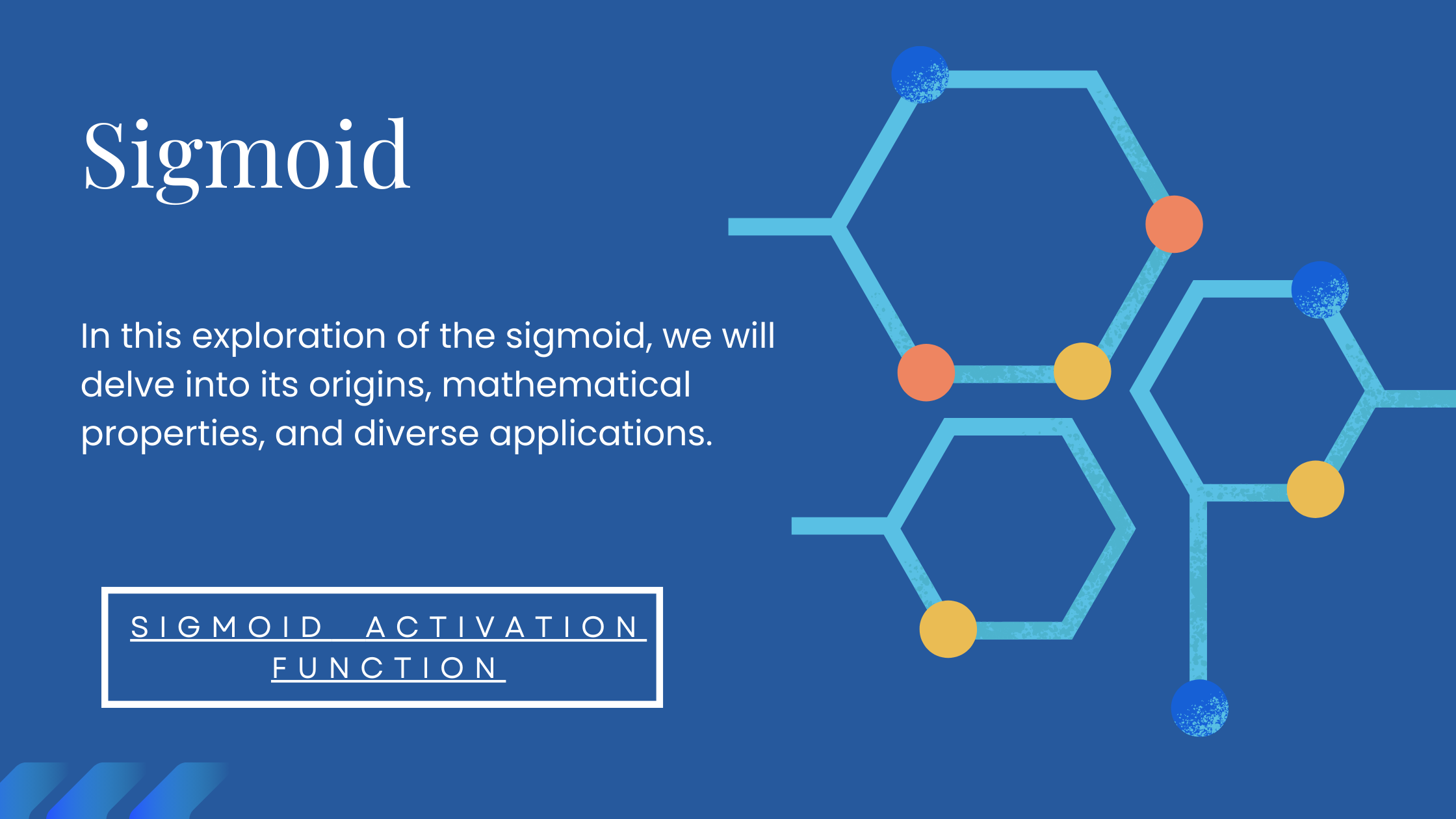Understanding the Sigmoid Activation Function: A Gateway to Neural Networks

The field of artificial intelligence has been making tremendous strides in recent years, with neural networks at the forefront of these developments. Central to the functioning of neural networks are activation functions, which determine the output of a neuron given its input. Among the various activation functions available, the sigmoid activation function holds a unique place. In this guest post, we will delve into the world of the sigmoid activation function, exploring its properties, applications, and significance in the realm of artificial neural networks.
The sigmoid activation function, also known as the logistic function, is a mathematical function commonly used in artificial neural networks and machine learning. It’s particularly useful in binary classification problems where you want to model the probability of an input belonging to one of two classes.
The mathematical expression for the sigmoid activation function is as follows:
�(�)=11+�−�σ(x)=1+e−x1
Here’s a breakdown of its key characteristics and why it’s used in neural networks:
- S-Shaped Curve: The most distinctive feature of the sigmoid function is its characteristic S-shaped curve. This curve enables it to map any real-valued input to an output between 0 and 1. This property is valuable in binary classification problems, where you want to smoothly transition between two classes.
- Output Range: The output of the sigmoid function is bound between 0 and 1. This is ideal for interpreting the output as a probability. The closer the output is to 0, the lower the probability, while values closer to 1 indicate a higher probability.
- Smooth and Continuous: The sigmoid function is a smooth, differentiable function. This differentiability is essential for gradient-based optimization algorithms, like backpropagation, which are used for training neural networks. It ensures that small changes in the input produce small changes in the output, making it suitable for optimizing model parameters.
While the sigmoid activation function has been historically important, it does have some limitations, such as the vanishing gradient problem. This problem can make training deep neural networks more challenging, as gradients become very small for extreme input values. For this reason, other activation functions like the Rectified Linear Unit (ReLU) have gained popularity in deep learning, as they mitigate the vanishing gradient problem.
What is the Sigmoid Activation Function?
The sigmoid activation function, also known as the logistic function, is a mathematical function that maps any real-valued number to a value between 0 and 1.:
�(�)=11+�−�
σ(x)=
1+e
−x
1
Here,
�
x represents the input to the function, and
�
e is the base of the natural logarithm (approximately 2.71828). The output of the sigmoid function is in the range [0, 1], making it suitable for problems where we need to model probabilities.
Properties of the Sigmoid Activation Function
- S-shaped Curve: The sigmoid function’s most notable characteristic is its S-shaped curve, which means it is sensitive to small changes in input. This sensitivity makes it ideal for problems where we want a smooth transition between two classes, such as in logistic regression.
- Output Range: As mentioned earlier, the output of the sigmoid function is constrained to the range [0, 1]. This property allows us to interpret the function’s output as a probability score, where values close to 0 represent a low probability, and values close to 1 represent a high probability.
- Smooth and Continuous: The sigmoid function is differentiable, which is crucial for many machine learning algorithms, especially when we need to perform gradient-based optimization like backpropagation in neural networks.
Applications of Sigmoid Activation
- Logistic Regression: The sigmoid activation function is a fundamental component of logistic regression, a widely used algorithm for binary classification. It maps the linear combination of input features to a probability score, helping to . However, they are now less common due to some limitations, such as the vanishing gradient problem, which can slow down training.
- Recurrent Neural Networks (RNNs): In certain parts of RNNs, sigmoid activation functions can be found. For instance, the LSTM (Long Short-Term Memory) cell utilizes sigmoid functions to control the flow of informations.
Significance and Considerations
- Vanishing Gradient: Sigmoid functions can suffer from the vanishing gradient problem, which can hinder the training of deep neural networks. To address this issue, alternative activation functions like ReLU (Rectified Linear Unit) have gained popularity., .
Conclusion
The sigmoid activation function has been a cornerstone of neural networks and machine learning, particularly in the context of binary classification problems. Its S-shaped curve and ability to model probabilities have made it a valuable tool in the AI toolkit. However, with the advent of more advanced activation functions like ReLU, its use in deep neural networks has diminished. Nevertheless, understanding the sigmoid function is crucial for anyone entering the world of artificial intelligence and machine learning, as it provides a foundation for grasping the evolution of activation functions and their role in neural networks.



